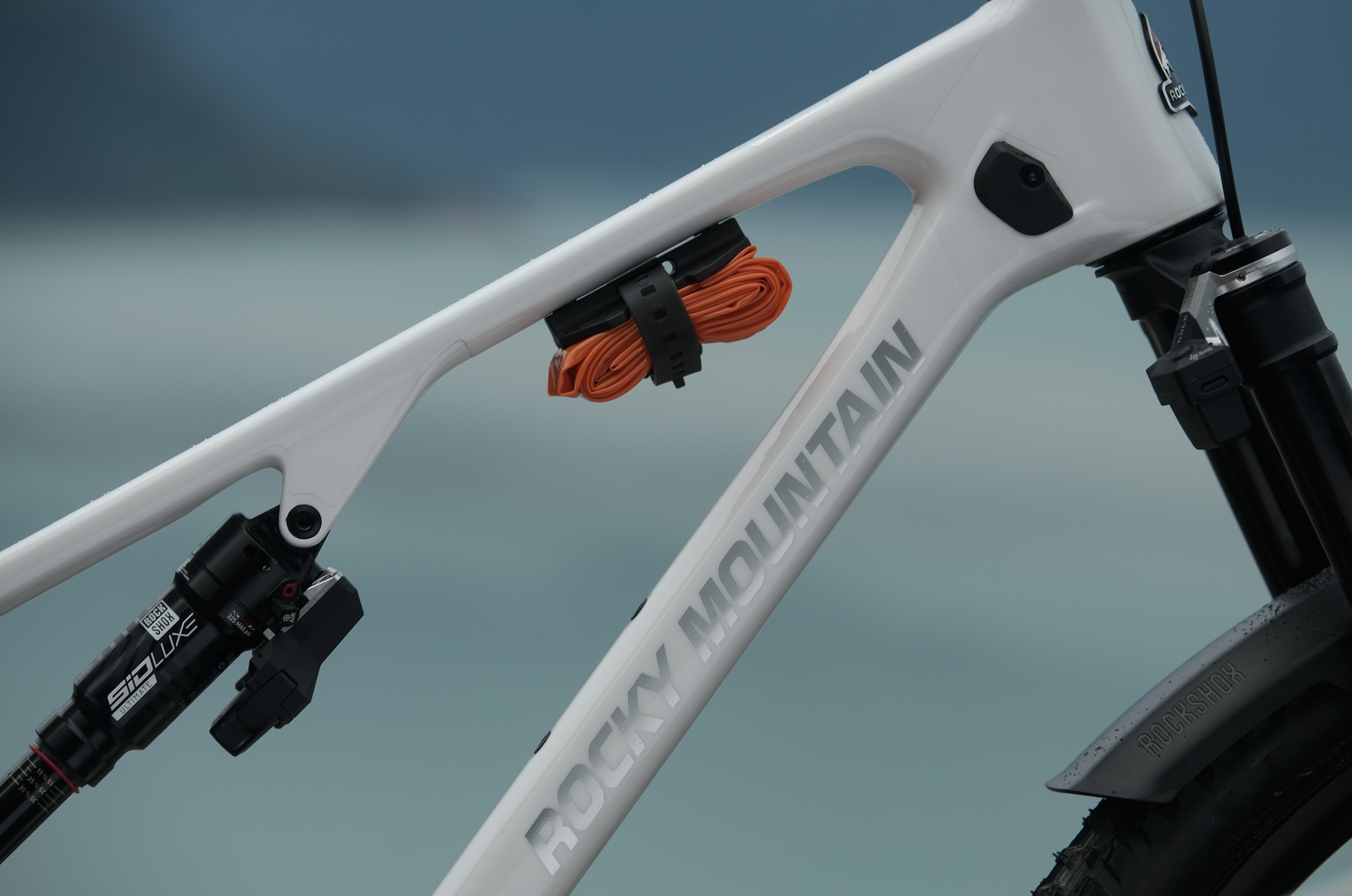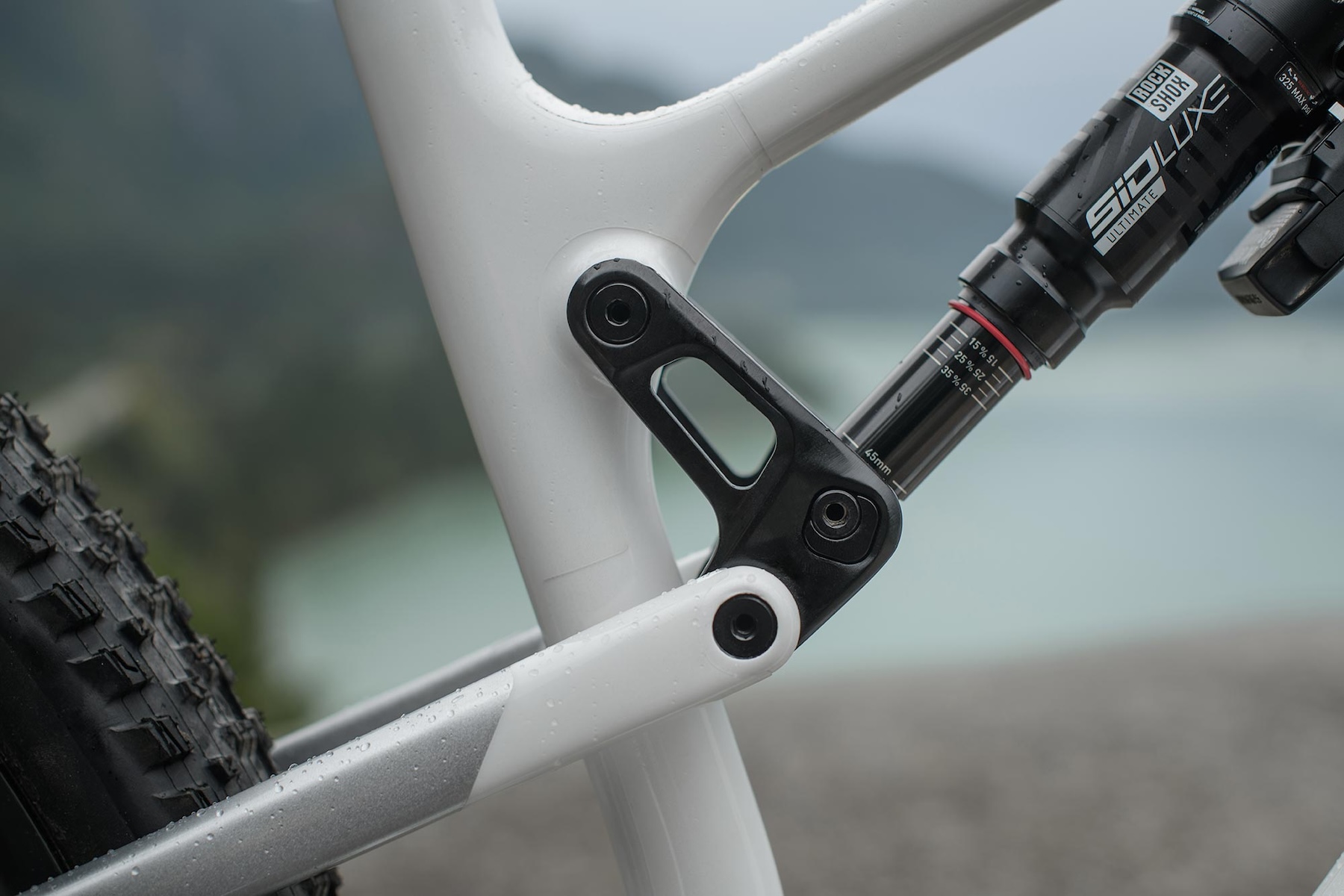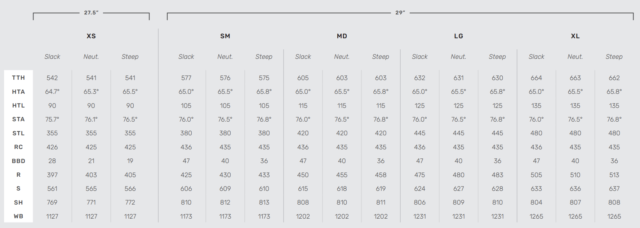Rocky Mountain Element
Wheel Size:
- XS: 27.5’’ front and rear
- S – XL: 29’’ front and rear
Suspension Travel:
- Frame: 120 mm
- Fork: 120 mm (XS size and C99 build), 130 mm (S – XL sizes)
Geometry Highlights:
- Sizes Offered: XS, S, M, L, XL
- Headtube Angle (Neutral): 65.5° (Neutral)
- Reach (size Medium, Neutral): 455 mm
- Chainstay Length (size Medium, Neutral): 435 mm (Neutral)
- Frame Material: Carbon fiber
Price:
- Complete bikes starting at $3,000 USD (see below for build details)
- Frameset: $2,999 USD, (does not include rear shock)

Intro
The prior Rocky Mountain Element was fairly eye-opening for us when we tested it by combining seemingly disparate traits into a highly efficient and fast ride. It wasn’t the best option for folks who were truly looking for a Cross Country race bike given its length and not-particularly-low weight, but it made a lot of sense as a go-fast bike for folks looking for the pedaling performance of a Cross Country bike with significantly more inspiring downhill chops.
In refreshing the Element, Rocky Mountain held onto the aggressive geometry of the old model — it is mostly the same in its dimensions — but brought in a flex stay design for greater stiffness and much lower weight. The suspension kinematics were tweaked a bit too. Let’s get into the details.

The Frame
The former Element was available in both carbon fiber and aluminum, but at least for now, the new one is a carbon-only affair. While that could change, the new bike’s big update is likely a barrier to using aluminum — that new one-piece rear triangle with flex stays. Flex stays have become extremely popular in Cross Country circles for their simplicity, lateral stiffness, and far lower weight than a pivot-based design. In Rocky Mountain’s case, the new Smoothlink SL Flex Pivot arrangement paired with a new carbon layup drops a whopping 350 grams from the frame weight alone. That large chunk of weight was lost despite Rocky Mountain adding dual-row bearings at the seatstay pivot to increase service life.

Outside of that new rear triangle and flex stay, the new Element’s silhouette is a whole lot like the last one. Certain areas are a bit more angular, but that same traditional shape remains with a link driving the shock into the top tube. Also like the last one, the XS size gets full 27.5’’ wheels, while the others are 29’’ only.
From a suspension perspective, Rocky Mountain has stuck with their Smoothlink design, and they don’t provide specifics around the leverage curves or other kinematics. They do, however, say that the Element now gets size-specific shock tunes to account for differing rider weights across the size range.
Riders looking to carry lots of water for long rides have something to be excited about too. As with the last one, the Element has abundant space for water bottles, with room for a full-size 650 ml bottle on the XS, a full-size plus a 450 ml Fidlock bottle on the Small, and room for two 770 ml bottles on the Medium through XL. Rocky Mountain has also added an accessory mount under the top tube for even more on-frame storage capacity.

Fit & Geometry
Folks who were fans of the former Element’s geometry will be pleased by the new one — it’s basically identical. It also still gets the RIDE-4 geometry adjustment system, which allows for easy geometry adjustments via a chip at the shock mount.

In the case of a size Medium in the Neutral position, the Element has a 65.5° head tube angle, matched to a 455 mm reach and 435 mm chainstays. A 40 mm bottom bracket drop is relatively low (as we’ve seen on a bunch of Rocky Mountain’s recent bikes), and the 618 mm stack is suitably low for a bike with Cross Country intentions. Shifting the RIDE-4 chip to the Slack position drops the head tube to 65°, shortens the reach slightly to 450 mm, and brings the bottom bracket down to a ground-hugging 47 mm drop. The Steep setting raises the head tube angle to 65.8°, the reach to 458 mm, and raises the bottom bracket to a 36 mm drop.
Rocky Mountain uses a fixed chainstay length across sizes Small through XL, measuring at 435 mm in the Neutral position. The XS gets shorter 425 mm chainstays, which are more proportionate to the tiny 403 mm reach. The XS bike also gets a shorter 120 mm fork to keep the stack height in check.
The full geometry chart is as follows:

The Build
For now, Rocky Mountain is launching with three builds for the Element — the Carbon 30, Carbon 70, and Carbon 99. The Carbon 30 and Carbon 70 both get 130 mm forks; the Carbon 30 gets a Marzocchi Z2 while the Carbon 70 gets a Fox 34 Performance Elite. Both get Fox Float rear shocks as well, and while the Carbon 30 sticks with mechanical shifting from Shimano, the Carbon 70 steps up to GX Transmission from SRAM.

The Carbon 99 gets a sizeable price tag, but also comes with rather fancy parts. Suspension is provided by RockShox this time, with the SID Ultimate fork and SIDLuxe shock both coming with the electronic Flight Attendant system. The SID Ultimate fork is only available up to 120 mm, so that’s what all sizes get. Otherwise, it’s the top shelf XX Transmission system handling shifting, and the DT Swiss XRC 1501 Carbon wheels are rather lightweight.
Rocky Mountain names the Element Carbon 50 and Carbon 90 models as well, but those builds are awaiting the availability of specific parts. Rocky Mountain indicated that they intend to launch those models in the spring once build kits are sorted, which will create additional options to fill the rather large price gaps in the current range.
Highlights from each available model’s builds are as follows:
- Drivetrain: Shimano XT M8100 / Deore M6100
- Brakes: Shimano MT4120 (180 mm rotors)
- Fork: Marzocchi Z2 (130 mm)
- Shock: Fox Float Performance
- Wheels: WTB KOM Team i27 rims, Shimano TC500 hubs
- Dropper Post: X-Fusion Manic (XS–S: 125 mm, M: 150 mm, L: 170 mm, XL: 200 mm)
- Drivetrain: SRAM GX AXS
- Brakes: SRAM Level Bronze (180 mm rotors)
- Fork: Fox 34 Performance Elite (130 mm)
- Shock: Fox Float Performance Elite
- Wheels: Race Face ARC 27 rims, DT Swiss 370 hubs
- Dropper Post: Fox Transfer Performance Elite (XS–S: 120 mm, M: 150 mm, L: 180 mm, XL: 210 mm)
- Drivetrain: SRAM XX Transmission
- Brakes: SRAM Level Ultimate (180 mm rotors)
- Fork: RockShox Sid Ultimate Flight Attendant (120 mm)
- Shock: RockShox SIDLuxe Ultimate Flight Attendant
- Wheels: DT Swiss XRC 1501 Carbon
- Dropper Post: RockShox Reverb AXS (XS–S: 125 mm, M: 150 mm, L–XL: 170 mm)
In addition to the complete builds, the Element frame can be purchased on its own for $2,999 USD / $3,599 CAD, but buyers will have to supply their own shock.
Some Questions / Things We’re Curious About
(1) Rocky Mountain pulled quite a chunk of weight out of the Element while enhancing stiffness — do those changes make for a different personality over the old one, or is it a case of small efficiency gains?
(2) Does the flex stay arrangement make for any material differences in the suspension feel, and does the Element still punch above its weight in that area?
Bottom Line (For Now)
With the new Element, Rocky Mountain has doubled down on the original geometry that helped make the first one feel so capable on tricky descents, but changes to the frame construction and suspension design have cut an impressive amount of weight. That should make the Element measure up well to its competition as far as offering efficient handling and a uniquely strong descending performance at a rather low weight target, but we’ll have to try the new one ourselves to test that theory — hopefully, we can do just that in the next few months.

What accessory mount is shown in the picture in your review?
Great review, thanks. How can I assess the weight of the frame only size XL? Hard to get such info.
Coming up on almost a year. Really looking forward to more on this bike!